Studio monitors are an essential element in any music production setup, acting as the window into the soul of your music.
They can help you dissect the fine details of your mix, ensuring every nuance is captured with precision.
As a music producer, knowing the best studio monitors can elevate your mixing game, providing clarity and accuracy in sound reproduction.
As well as enhancing your overall production quality and workflow.
In this article, we’ll break down:
- Types of studio monitors ✓
- Key features to before buying studio monitors ✓
- The 15 best studio monitors for 2024 ✓
- Room acoustics and monitor placement ✓
- Connectivity options ✓
- Frequency response importance ✓
- Power and size considerations ✓
- Brand reputations and reliability ✓
- Much more ✓
By the end of this article, you’ll have a comprehensive understanding of the best studio monitors for achieving pristine audio quality.
This way, you can make informed decisions like a true professional.
Whether you’re setting up a home studio or upgrading your professional space, this guide will equip you with the knowledge to select the best studio monitors.
You can find options that resonate with your production style and requirements.
So, let’s dive in…
Table of Contents
- Different Kinds of Studio Monitors
- Things to Consider Before Buying Studio Monitors
- The 15 Best Studio Monitors For Music Production (2024)
- #1. JBL LSR305P MKII
- #2. KRK Rokit 5
- #3. PreSonus Eris E5
- #4. Yamaha HS5
- #5. Kali Audio LP-6
- #6. Adam A7X by ADAM Audio
- #7. KRK Rokit RP7 G4
- #8. Genelec 8010A
- #9. Mackie MR824
- #10. Dynaudio BM5 mkIII
- #11. Focal Shape 65
- #12. HEDD Audio Type 20
- #13. Neumann KH 120
- #14. Yamaha HS8
- #15. Focal Solo6 Be
- Best Studio Monitors: Final Thoughts
Different Kinds of Studio Monitors
Navigating through the types of studio monitors can be overwhelming, especially when you’re trying to find the perfect match for your studio. Let’s break down the most common types to help you understand their unique characteristics and benefits.
-
Active Monitors
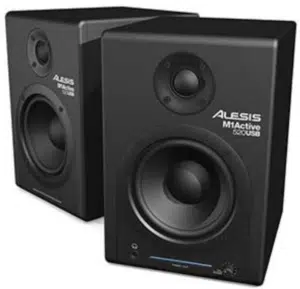
Active monitors (also known as active speakers) are a staple in many music production setups, offering an all-in-one solution with built-in amplification.
This design eliminates the need for a separate external amplifier, making them an ideal choice for those seeking a straightforward setup.
They are especially popular in home studios, where space efficiency and ease of use are paramount.
Active monitors provide a balanced and consistent audio output 一 ensuring that music producers can trust the sound they hear for mixing and mastering.
NOTE: Many modern active monitors incorporate advanced digital signal processing (DSP) to optimize sound quality and provide room correction features.
In addition to their practicality and advanced digital signal processing, active monitors often come with additional features like:
- Room correction
- EQ settings
This allows producers to tailor the sound to their specific environment, enhancing the accuracy of their mixes.
The versatility and user-friendly nature of active monitors make them a go-to for both novice and experienced producers.
-
Passive Monitors
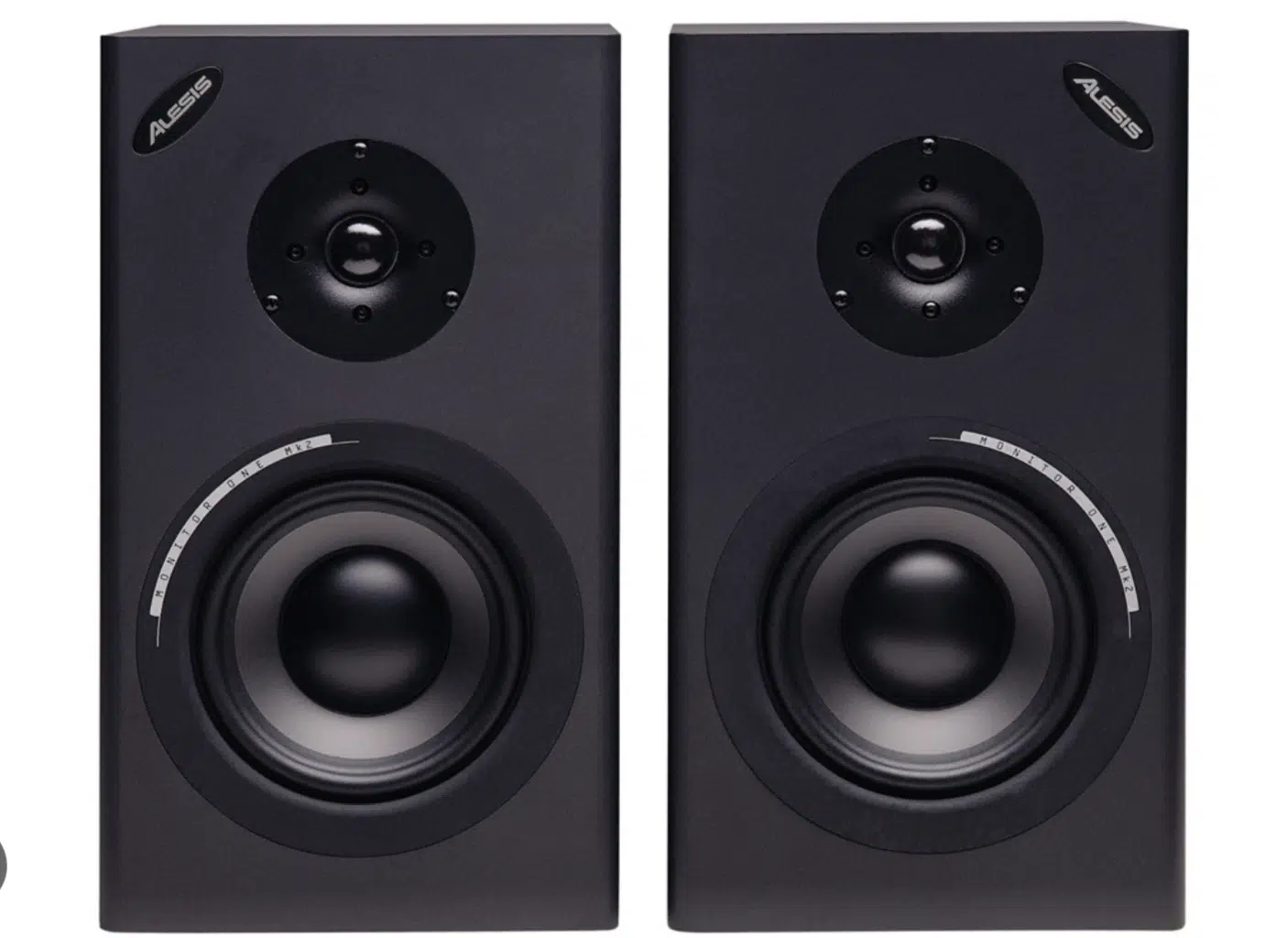
Passive monitors (passive speakers), in contrast, require an external amplifier to power them, offering a level of customization and flexibility that active monitors do not.
This setup allows music producers to choose amplifiers that best match their sound preferences and the acoustics of their home recording studio.
Passive monitors are often favored in professional studios for their potential to achieve a more refined audio quality.
Though they require more knowledge in terms of setup and audio equipment, passive monitors reward users with the ability to precisely control and shape their sound.
This type of monitor is ideal for those who enjoy tailoring their audio environment and have a deeper understanding of sound engineering.
-
Ported Monitors

Ported monitors, also known as bass-reflex monitors, are designed with a port or opening that enhances the reproduction of bass frequencies.
This feature is particularly beneficial for genres of music that are bass-heavy and work with very low frequencies, such as hip-hop, trap, and electronic music.
The port design helps in extending the low frequency response 一 providing a fuller and more robust bass sound.
However, the placement (or, listening position) of a ported monitor in a room can significantly affect their performance.
- Front-ported monitors 一 More flexible in terms of placement.
- Rear-ported models 一 May require more space from walls to prevent bass frequencies from becoming overwhelming.
Ported monitors are a great choice for producers who prioritize strong and clear bass in their mixes.
No matter how much bass you’re incorporating, they are supreme.
-
Nearfield Monitors

Nearfield monitors are designed for close-range listening, making them a perfect choice for a small room or home studio.
These monitors allow for accurate sound reproduction without the interference of room acoustics, which is essential for precise mixing.
Nearfield monitors provide a clear and detailed sound image, enabling producers to hear subtle nuances in their music.
They are an excellent tool for critical listening, where every detail in the mix needs to be assessed accurately.
The compact size of a nearfield monitor also makes them ideal for smaller spaces.
Despite their smaller stature, they are capable of delivering high-quality sound 一 making them a favorite among producers who work in confined areas.
These monitors ensure that even in a limited space, audio quality is not compromised, allowing for professional-level production in a home studio setting.
Things to Consider Before Buying Studio Monitors
Understanding what to look for before buying studio monitors is crucial to making the right investment for your home/professional studio. Let’s dive into some key aspects to keep in mind.
-
Frequency Range
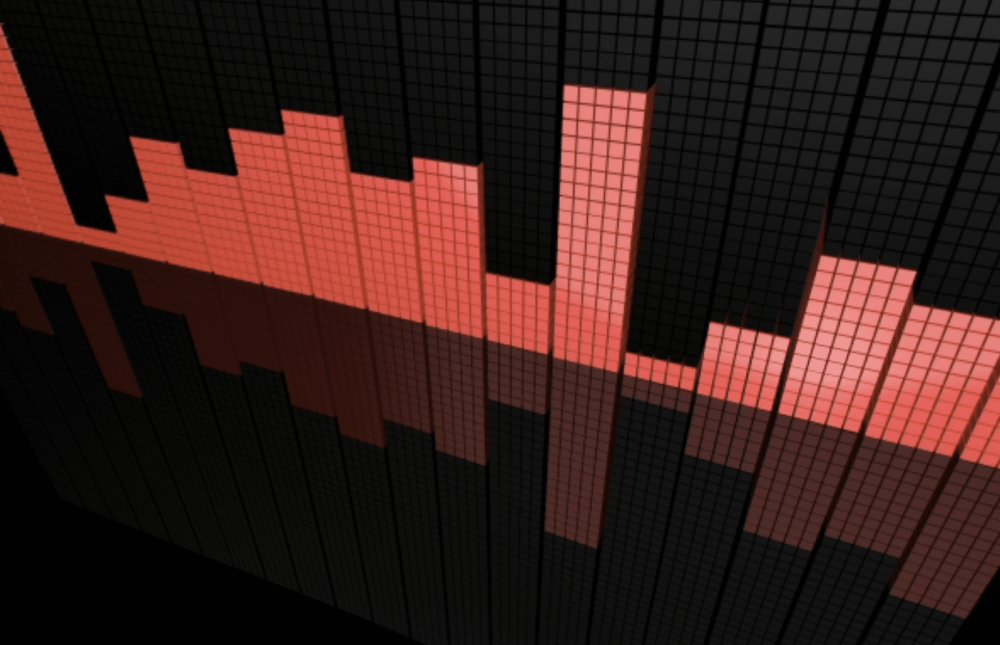
The frequency range of a studio monitor indicates their ability to reproduce the full spectrum of sound, from the lowest bass frequencies to the highest treble notes.
A wider frequency range in a studio monitor ensures a more transparent sound, crucial for accurate music production and mixing tasks.
-
Room Acoustics
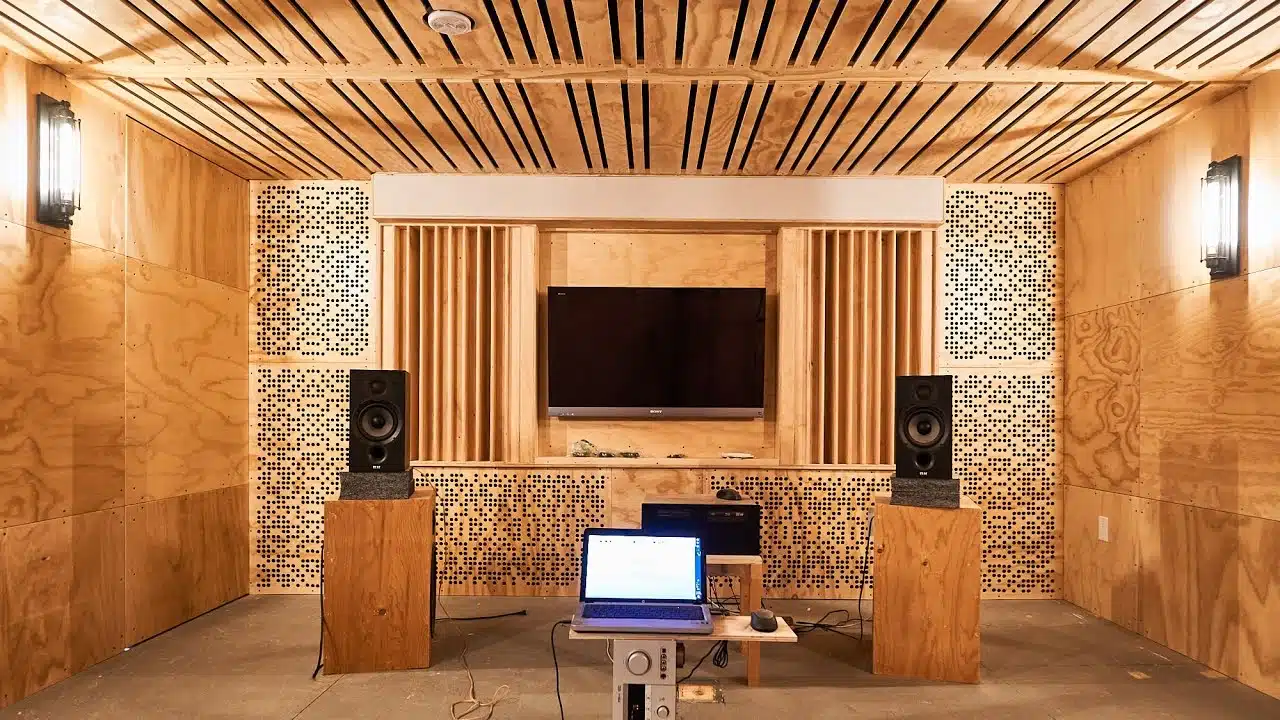
The acoustics of your studio space significantly influence the performance of studio monitors.
Before choosing a monitor, consider the acoustic properties of your room.
Investing in room treatment like acoustic panels can enhance the accuracy of monitors in environments with less-than-ideal acoustics.
-
Size and Power
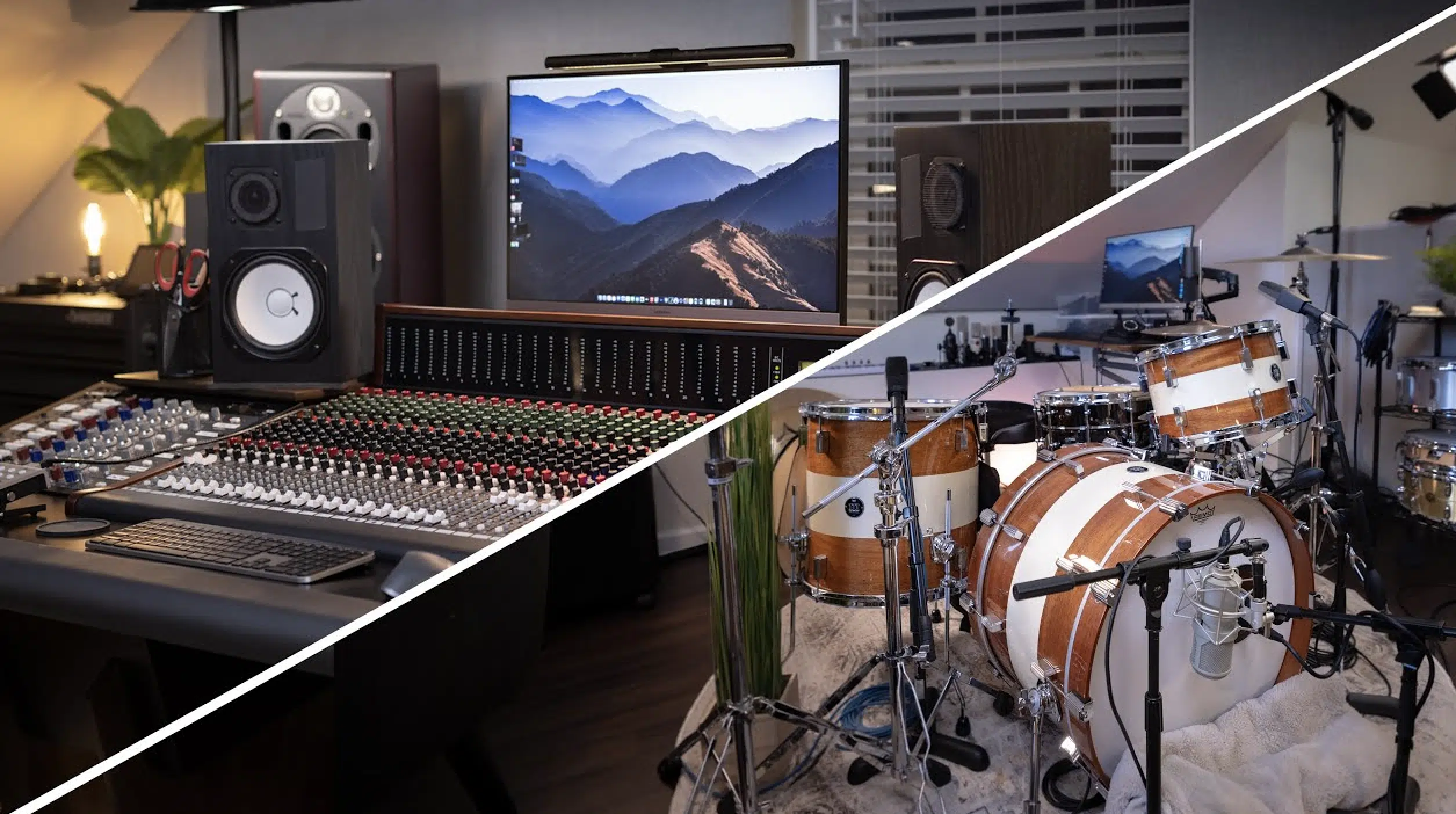
The physical size of most monitors and their power output should match the dimensions and acoustics of your home recording studio.
Larger rooms may require more powerful monitors for effective sound distribution.
Smaller spaces (like a smaller room) can benefit from compact monitors that prevent overwhelming bass frequencies.
So, when choosing a studio monitor, make sure to consider the size of your work space.
-
Connectivity
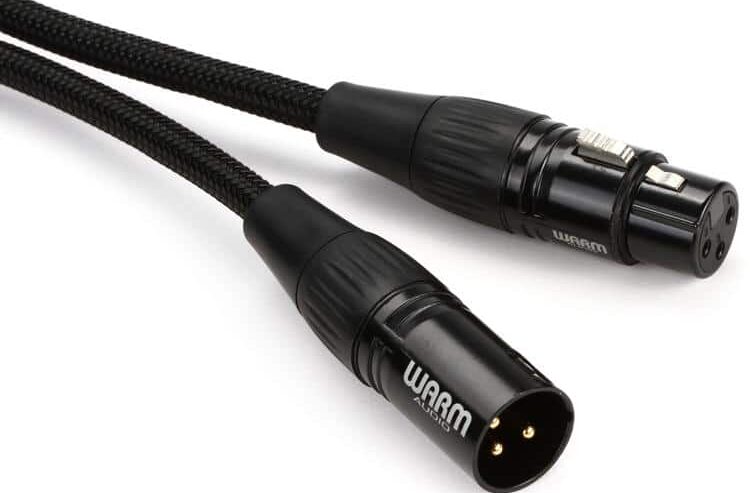
Studio monitors come with various connectivity options, such as XLR, TRS, and RCA inputs.
- XLR cables 一 Balanced connections offering high-quality, noise-free audio.
- TRS (Tip-Ring-Sleeve) cables 一 Similar to XLR cables in providing balanced audio but in a different format.
- RCA connectors 一 Typically unbalanced and are common in consumer audio equipment.
Ensuring that the studio monitor has the right connectors for your speaker cabinet is crucial for a seamless integration with your existing audio equipment.
Now that you’re aware of the different types of studio monitors and what to consider before purchasing, let’s dive into the 15 best studio monitors for 2024.
The 15 Best Studio Monitors For Music Production (2024)
As we delve into the specifics of each studio monitor, it’s important to note that each one has been selected for its exceptional performance and suitability for various production environments. Let’s kick things off with the first studio monitor, the JBL LSR305P MKII.
#1. JBL LSR305P MKII
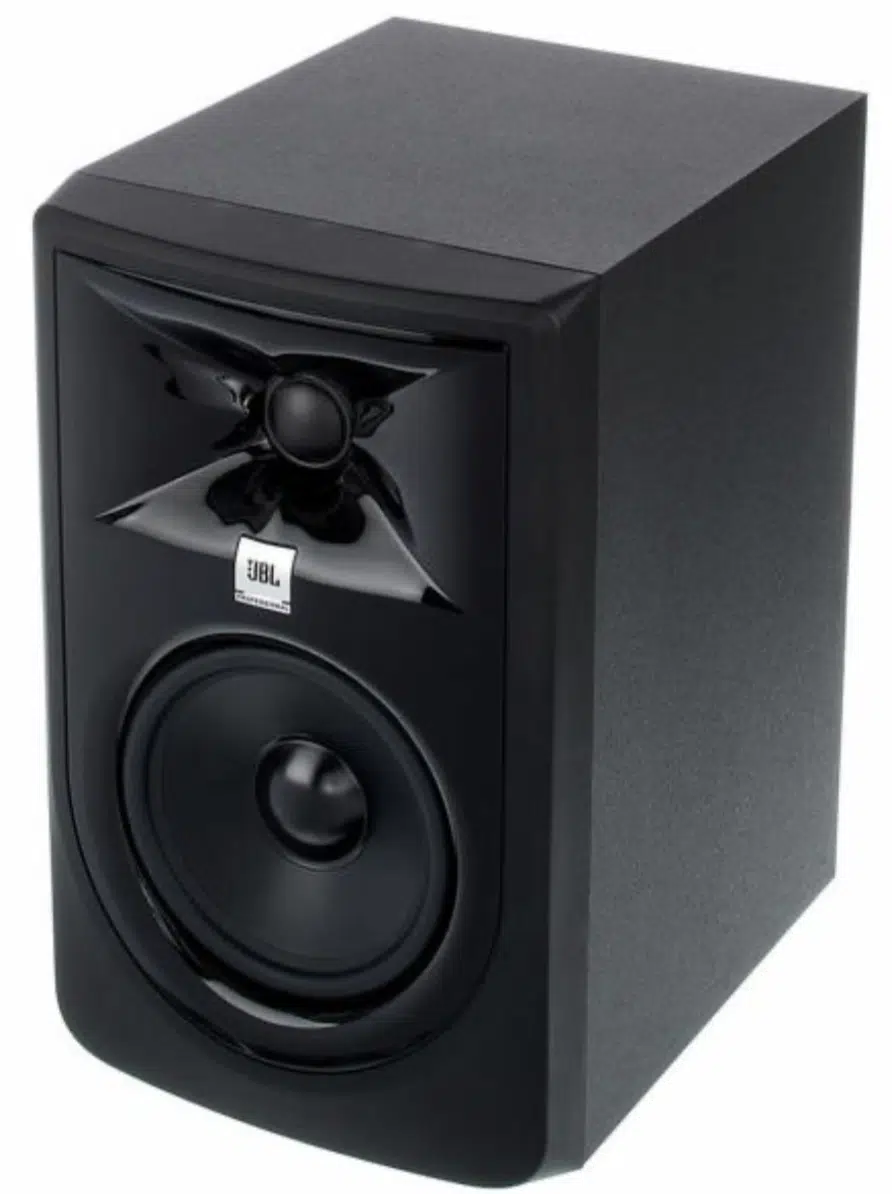
The JBL LSR305P MKII studio monitors are a standout choice for music producers seeking quality within an affordable range.
These studio monitors are revered for their impressive clarity and balanced sound profile, making them ideal for a variety of music genres.
What sets the JBL LSR305P MKII apart is their ability to provide consistent sound quality even in less-than-ideal room acoustics.
This feature is crucial for many home studio setups.
In terms of performance, the JBL LSR305P MKII shines with its wide frequency range, delivering:
- Detailed highs and mids
- A well-defined bass response
The design includes a 5” low-frequency driver and a 1” high-frequency driver, ensuring a broad frequency spectrum is covered.
The monitor’s Image Control Waveguide technology is specifically engineered to enhance the listening sweet spot.
This ensures that sound quality remains consistent across different listening positions.
It makes the JBL LSR305P MKII an excellent choice for both music production and critical listening.
Remember, studio monitors aim to reflect the best sound quality, and this studio monitor does not disappoint.
Key Features of These Studio Monitors:
- 5” LF driver and 1” HF driver for a wide frequency spectrum.
- Image Control Waveguide technology enhances the listening sweet spot.
- Wide frequency range ensures detailed sound reproduction.
- Ideal for a variety of music genres and production styles.
- The best studio monitor for 2024.
#2. KRK Rokit 5
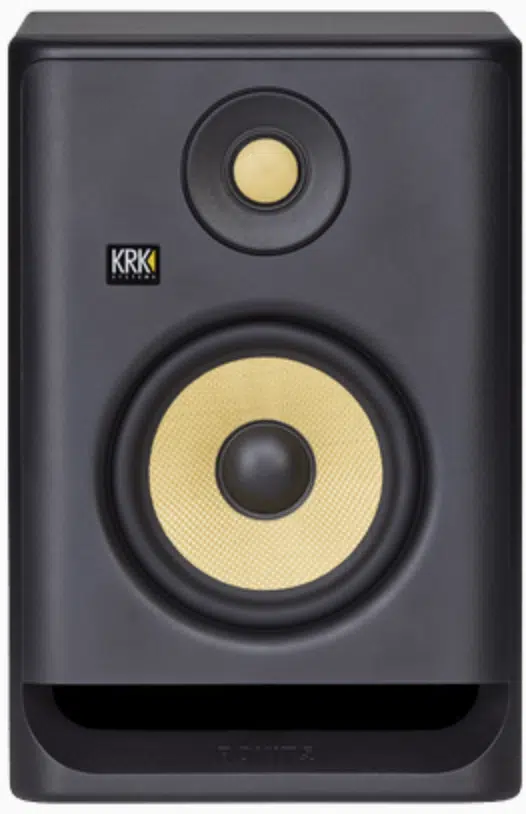
The KRK Rokit 5 studio monitors are a popular choice among music producers, known for their distinctive yellow and black design.
They are particularly favored in the electronic music production community for their reliable performance and aesthetic appeal.
These monitors offer a balanced low-end response, making them suitable for long production sessions.
KRK Rokit 5 monitors feature a 5” glass-Aramid composite woofer and a 1” soft-dome tweeter, delivering a frequency range of 43Hz-40kHz.
This ensures both clarity in the highs and a solid bass presence, crucial for bass-heavy genres (like hip-hop).
It will make your music sound exceptionally booming.
The monitors are also equipped with proprietary waveguide technology 一 optimizing them for detailed imaging and a wide sweet spot.
This is essential for accurate mix assessments.
The inclusion of a built-in amplifier simplifies the setup, making them a great choice for both novice and experienced producers.
Key Features of These Studio Monitors:
- 5” glass-Aramid composite woofer and 1” soft-dome tweeter.
- Frequency range of 43Hz-40kHz for clear highs and solid bass.
- Proprietary waveguide technology for detailed imaging.
- Built-in amplifier for ease of setup.
- One of the best studio monitors for 2024.
#3. PreSonus Eris E5

The PreSonus Eris E5 studio monitors are renowned for their exceptional audio quality at an affordable price.
These monitors are a go-to for producers who need a reliable, accurate sound reproduction tool.
The Eris E5 stands out for its smooth frequency responses and high-end clarity.
It features a 5” woofer and a 1.25” silk-dome tweeter, offering a frequency range of 53Hz-22kHz.
NOTE: This range ensures a faithful representation of sound across the spectrum, particularly valuable for genres demanding precision, such as classical or jazz.
The monitor’s acoustic tuning controls, including a midrange and high-frequency adjustment, allow for fine-tuning to match room acoustics.
This makes it versatile for different professional studio/home recording studio environments.
The inclusion of a front baffle port means these monitors can be placed close to walls without compromising the low-end response.
Key Features of These Studio Monitors:
- 5” woofer and 1.25” silk-dome tweeter for balanced sound.
- Frequency range of 53Hz-22kHz ensures accurate representation.
- Acoustic volume control (volume levels) for room adaptation.
- Front baffle port for flexible placement.
- One of the best studio monitors for 2024.
#4. Yamaha HS5
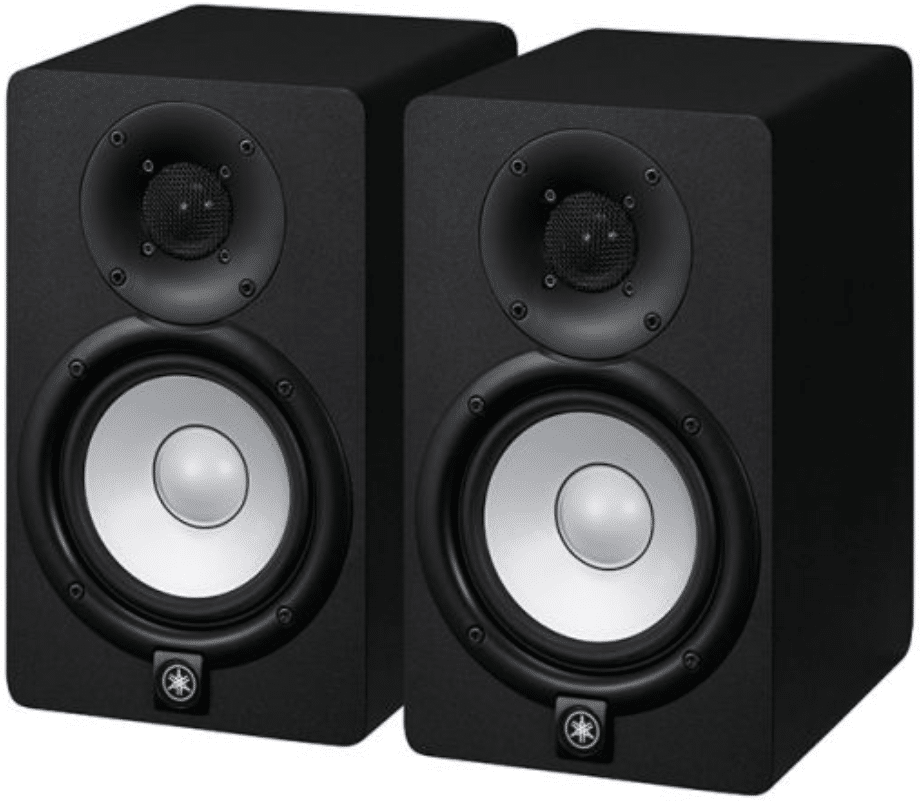
The Yamaha HS5 studio monitors are a testament to Yamaha’s longstanding reputation in the audio equipment world.
It offers sound quality that rivals much higher-priced monitors.
These monitors are particularly acclaimed for their transparent sound and flat frequency response.
They are the preferred choice for music producers and mixing engineers who prioritize accuracy in their mixes.
Featuring a 5” cone woofer and a 1” dome tweeter, the HS5 delivers a frequency range of 54Hz-30kHz 一 ensuring a detailed representation across the frequency spectrum.
This studio monitor has a bi-amplified design, providing both the woofer and tweeter with separate amplifiers.
This enhances the sound quality and ensuring low distortion.
The ROOM CONTROL and HIGH TRIM response controls are notable additions, providing flexibility in tuning the monitors to various room acoustics.
This is invaluable for home studio environments.
Key Features of These Studio Monitors:
- 5” cone woofer and 1” dome tweeter for a balanced frequency response.
- Frequency range of 54Hz-30kHz for detailed sound reproduction.
- Bi-amplified design ensures low distortion and superior sound quality.
- ROOM CONTROL and HIGH TRIM for room acoustics adaptation.
- One of the best studio monitors for 2024.
#5. Kali Audio LP-6
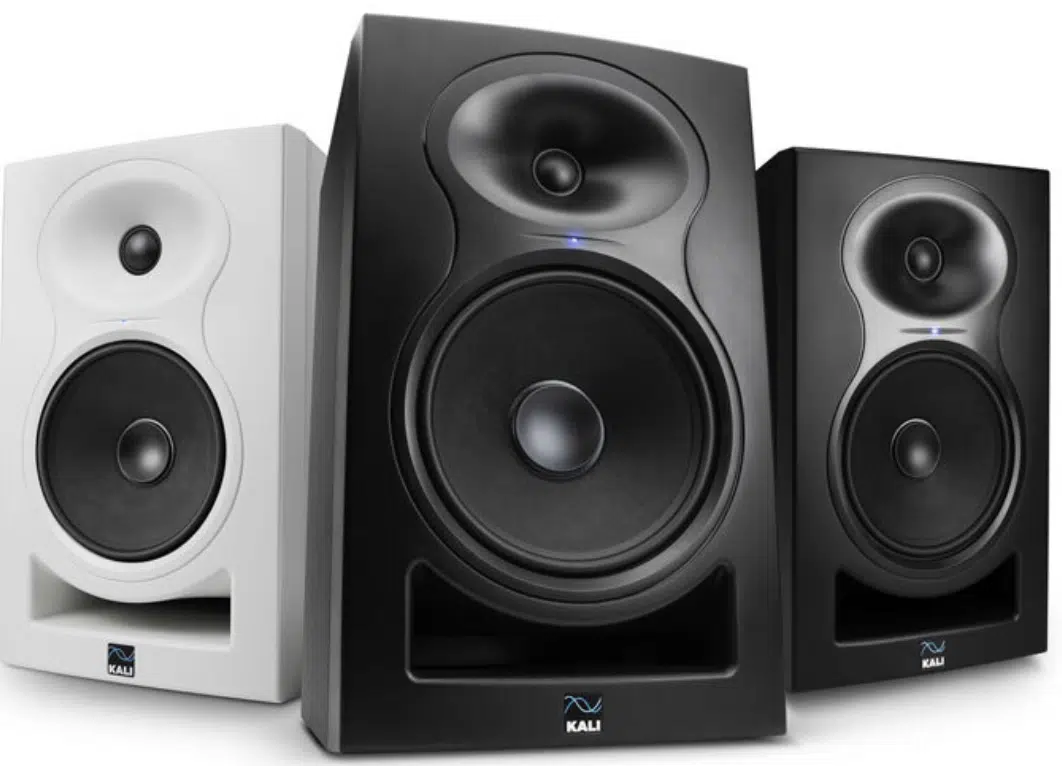
Kali Audio’s LP-6 studio monitors are a game-changer in the studio monitor market, offering exceptional transparency at an affordable price.
They stand out for their ability to deliver accurate and neutral sound, a crucial attribute for critical listening and balanced mixing in music production.
The LP-6 is equipped with a 6.5” woofer and a 1” tweeter, covering a frequency range of 45Hz-21kHz.
This range contributes to a natural and flat frequency response, ideal for a truthful representation of your mixes.
The LP-6 also features Kali’s innovative “Boundary EQ,” allowing you to adjust the monitors to various room settings, whether placed close to a wall or on stands.
This adaptability is a significant advantage for home studios where room acoustics can vary.
Key Features of These Studio Monitors:
- 6.5” woofer and 1” tweeter for a wide frequency range.
- Frequency range of 45Hz-21kHz for a natural and flat response.
- Boundary EQ for adaptable room placement.
- Ideal for critical listening and balanced mixing.
- One of the best studio monitors for 2024; better than most other systems.
#6. Adam A7X by ADAM Audio
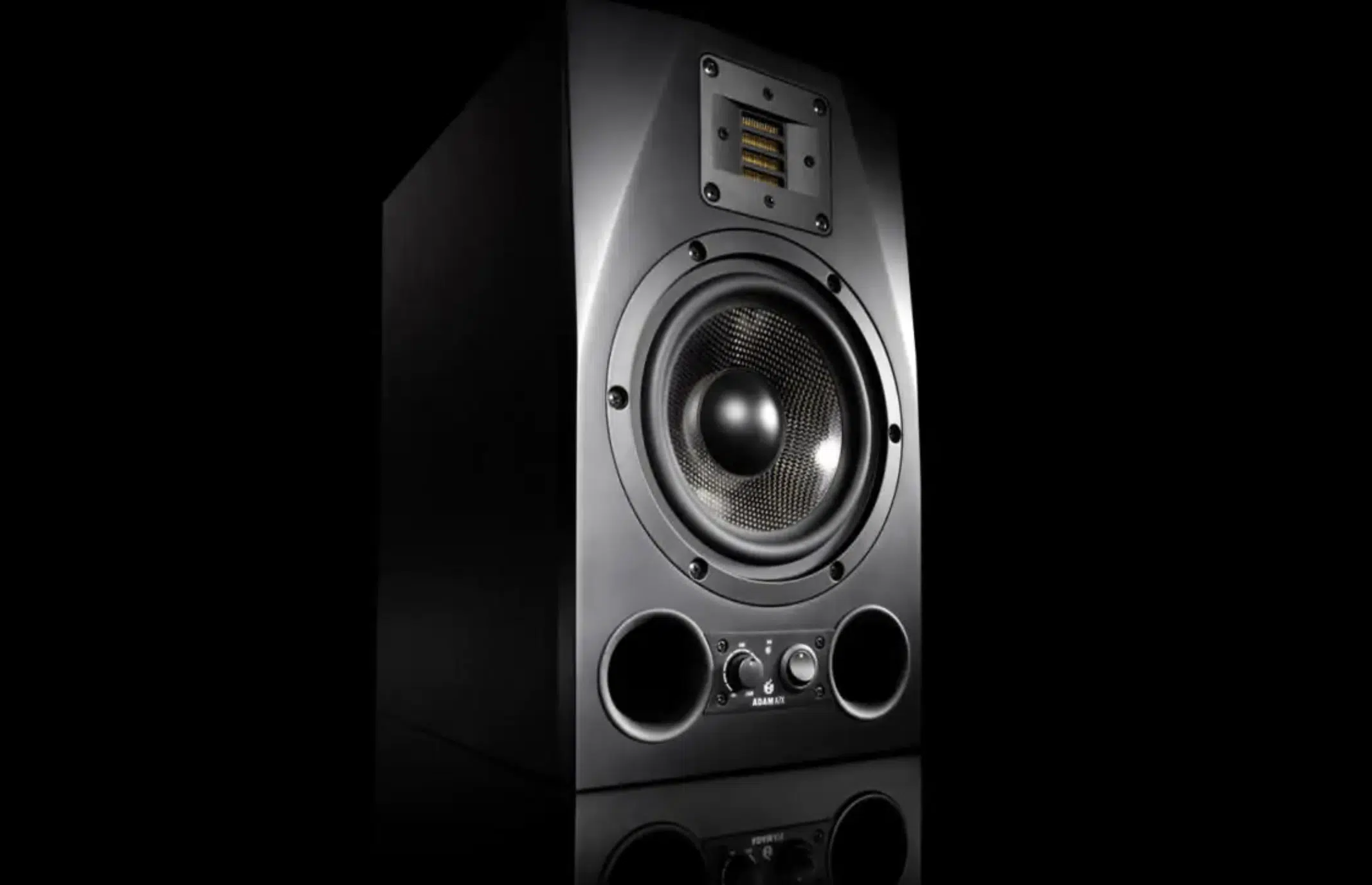
The A7X from ADAM Audio represents the pinnacle of studio monitor engineering, merging technical excellence with sonic perfection.
As one of the most popular studio monitors among audio professionals, the A7X from ADAM Audio is renowned for its precise and detailed sound.
This makes it a staple in many professional studios across the world.
At the heart of the A7X’s performance is:
- The X-ART tweeter 一 Delivering extended high frequencies up to 50kHz.
- A 7” mid-woofer 一 Ensuring a transparent sound in the low frequencies and midrange frequencies.
This configuration, along with a 42Hz-50kHz frequency range, allows for an exceptionally flat frequency response.
This makes it the best studio monitor for accurate monitoring.
The A7X from ADAM Audio has unique design and also incorporates advanced technologies like rear-firing bass ports, unlike some other monitors.
This contributes to more bass response (bass boost) and overall sound quality.
Key Features of These Studio Monitors:
- X-ART tweeter for extended high frequencies.
- 7” mid-woofer for transparent midrange frequencies.
- Frequency range of 42Hz-50kHz for a flat frequency response.
- Rear-firing extended bass ports enhance bass response.
- Exceptional build quality.
- The AX7 by ADAM Audio is one of the best studio monitors for 2024.
#7. KRK Rokit RP7 G4
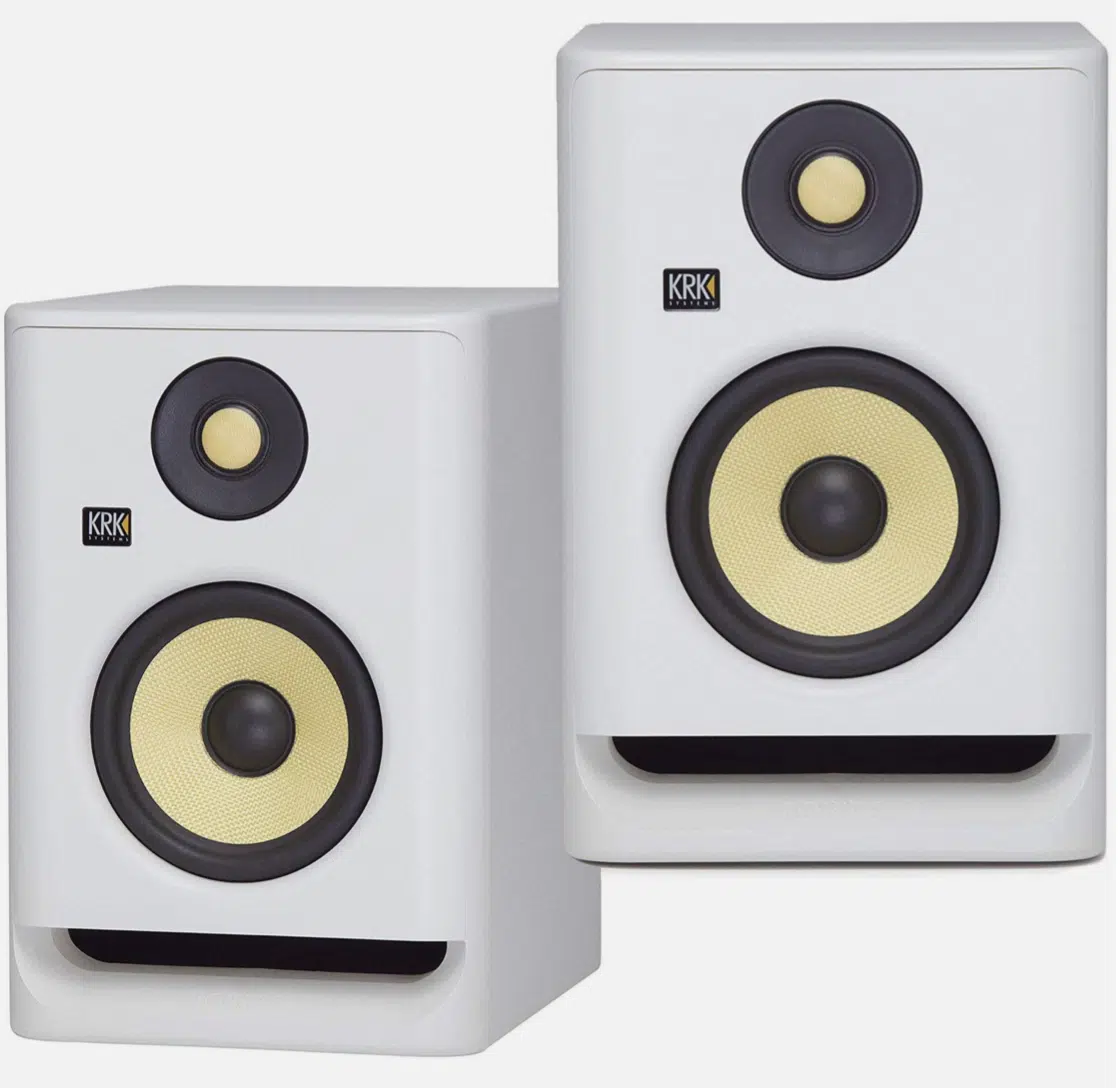
The KRK Rokit RP7 G4, an evolution of the famed Rokit series, stands out in the realm of studio monitors for its enhanced audio quality and robust build.
Ideal for modern music-making, these monitors are admired for their balanced sound and durability, essential for long hours of mixing and mastering.
This model features a 7” woofer and a 1” tweeter, ensuring a comprehensive frequency range of 42Hz-40kHz.
Which is super sophisticated when compared to other monitors.
The RP7 G4 offers exceptional transient response and low distortion, crucial for any producer or audio engineer working with:
- Dynamic tracks
- Detailed beats
Additionally, its onboard room tuning technology allows for optimal performance in varying room acoustics.
This makes it a versatile choice for both home and professional studios.
Key Features of These Studio Monitors:
- 7” woofer and 1” tweeter for extended frequency range.
- Frequency range of 42Hz-40kHz for full spectrum sound.
- Exceptional transient response and low distortion.
- Onboard room tuning technology for versatile placement.
- One of the best studio monitors for 2024.
#8. Genelec 8010A
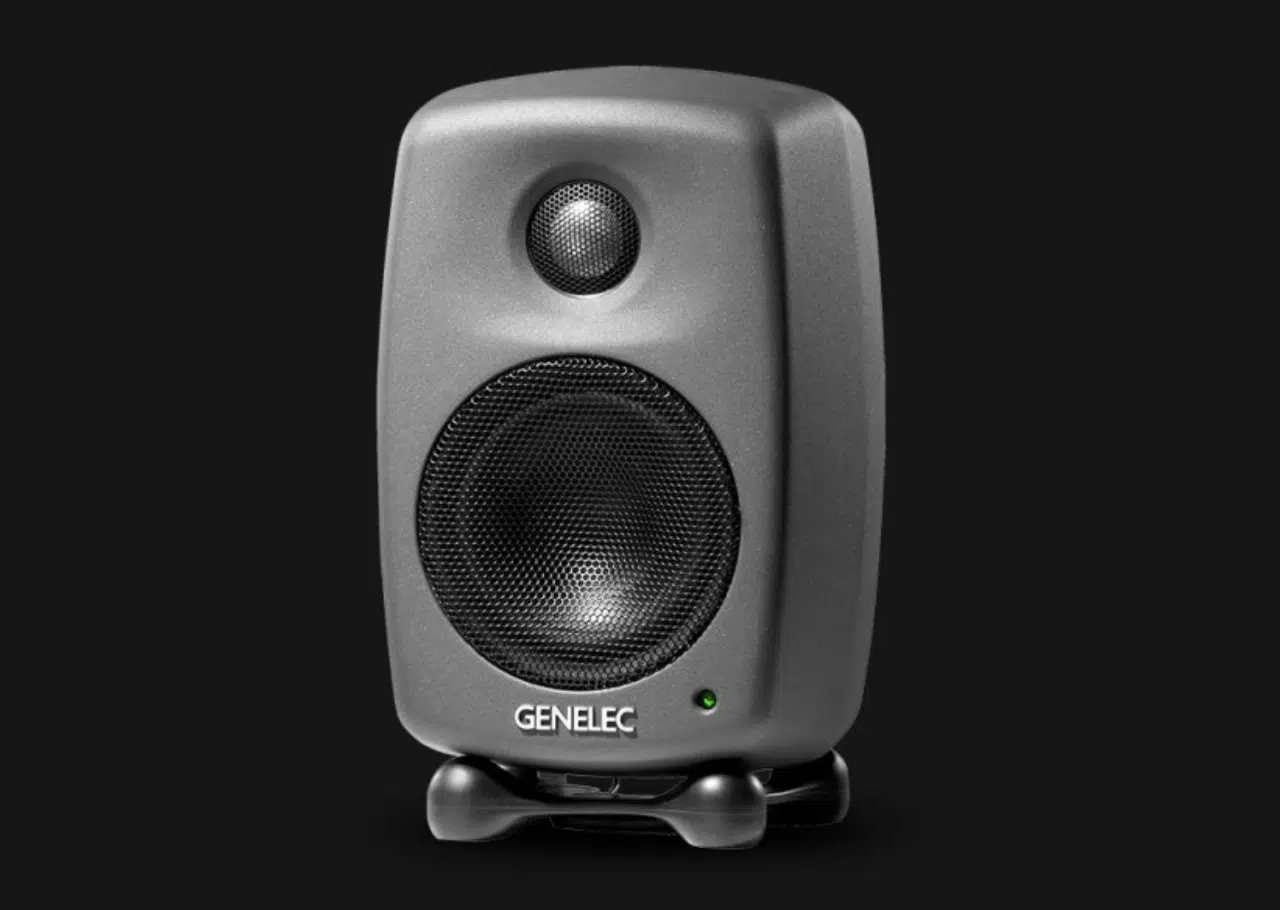
The Genelec 8010A brings exceptional audio quality in a compact form, making it ideal for small home studios or mobile setups.
Revered for its clear and transparent sound, it is a popular choice for music professionals who demand precision and reliability in their audio equipment.’
Featuring a 3” woofer and a 0.75” tweeter, the 8010A covers a frequency range of 67Hz-25kHz 一 ensuring a precise and flat frequency response.
Its advanced design incorporates a Directivity Control Waveguide for accurate sound imaging and a Laminar Integrated Port for exceptional bass response.
These features combined make the 8010A a powerhouse in a small package, ideal for critical listening in various environments.
Key Features of These Studio Monitors:
- 3” woofer and 0.75” tweeter for precise sound reproduction.
- Frequency range of 67Hz-25kHz for a flat frequency response.
- Directivity Control Waveguide for accurate sound imaging.
- Laminar Integrated Port for exceptional bass response.
- One of the best studio monitors for 2024.
#9. Mackie MR824
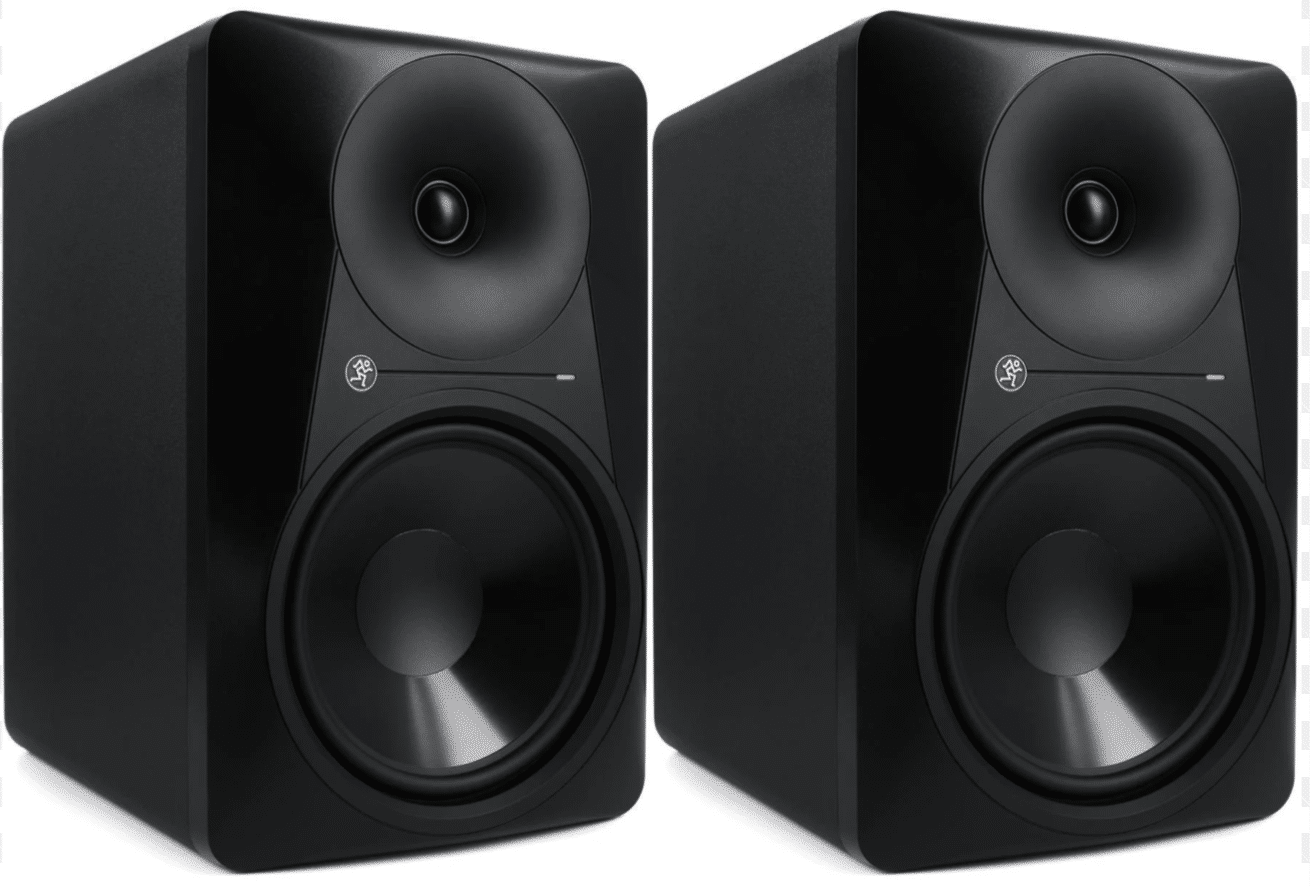
The Mackie MR824 studio monitors are known for their versatility and high-fidelity sound, suitable for a wide array of audio applications.
These monitors are a favorite among music producers for their consistent performance across various genres (like hip-hop, trap, R&B, techno, etc.) and production styles.
Equipped with an 8” woofer and a 1” tweeter, the MR824 offers a frequency range of 35Hz-20kHz, delivering supreme tonal balance and wide frequency range.
The design of this best studio monitor includes:
- Logarithmic waveguide technology for enhanced stereo imaging.
- A neutral frequency response for transparent sound.
The MR824 also features acoustic space controls.
This allows for easy adaptation to different room acoustics, a vital aspect for music-making in home studios.
Key Features of These Studio Monitors:
- 8” woofer and 1” tweeter for a broad frequency range.
- Frequency range of 35Hz-20kHz for balanced sound.
- Logarithmic waveguide technology for enhanced stereo imaging.
- Acoustic space controls for room adaptation.
- One of the best studio monitors for 2024.
#10. Dynaudio BM5 mkIII
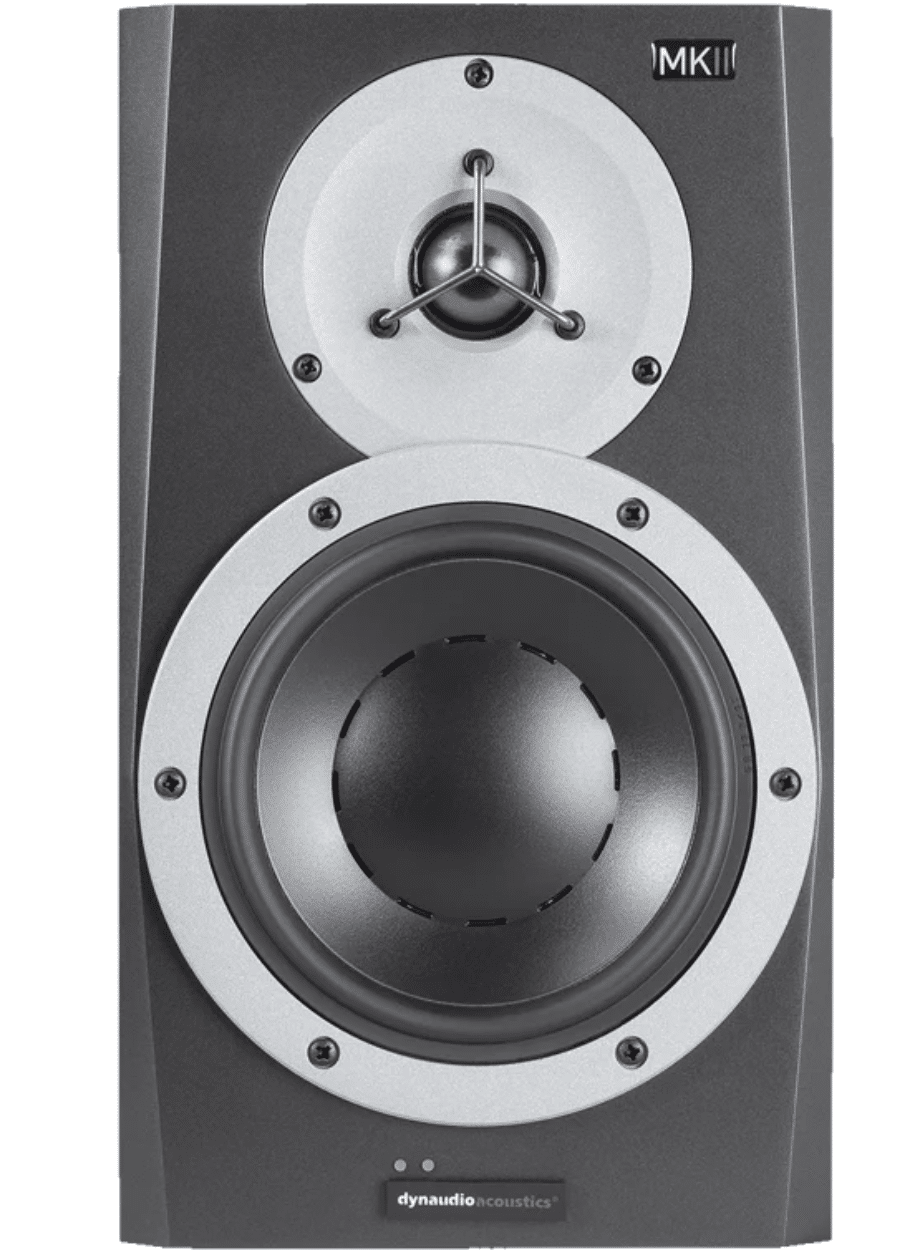
The Dynaudio BM5 mkIII studio monitors, a hallmark of exceptional engineering, are renowned for their precision and sonic accuracy.
Ideal for music production that demands detailed sound reproduction, these monitors have earned a reputation for their remarkable audio quality and robust build.
They are suitable for both home and professional studios.
Featuring a 7” woofer and a 1” tweeter, the BM5 mkIII covers a frequency range of 42Hz-24kHz.
It includes an expansive soundstage with:
- Crystal-clear highs
- Impactful lows
The high pass filter options for subwoofer integration and hand-crafted design reflect Dynaudio’s commitment to quality.
Therefore, it ensures a natural and transparent sound ideal for critical listening and manipulation of sound waves.
This studio monitor delivers the full low-end and more power of larger monitors in a compact form.
It makes this studio monitor a top choice for a space-conscious producer or audio engineer.
Key Features of These Studio Monitors:
- 7” woofer and 1” tweeter for a comprehensive frequency range.
- Frequency range of 42Hz-24kHz for detailed sound reproduction.
- Exceptional build quality.
- High pass filter options for seamless subwoofer integration.
- Hand-crafted design ensures natural and transparent sound.
- Ideal for both home and professional studios (for a large/small space).
- One of the best studio monitors for 2024.
#11. Focal Shape 65
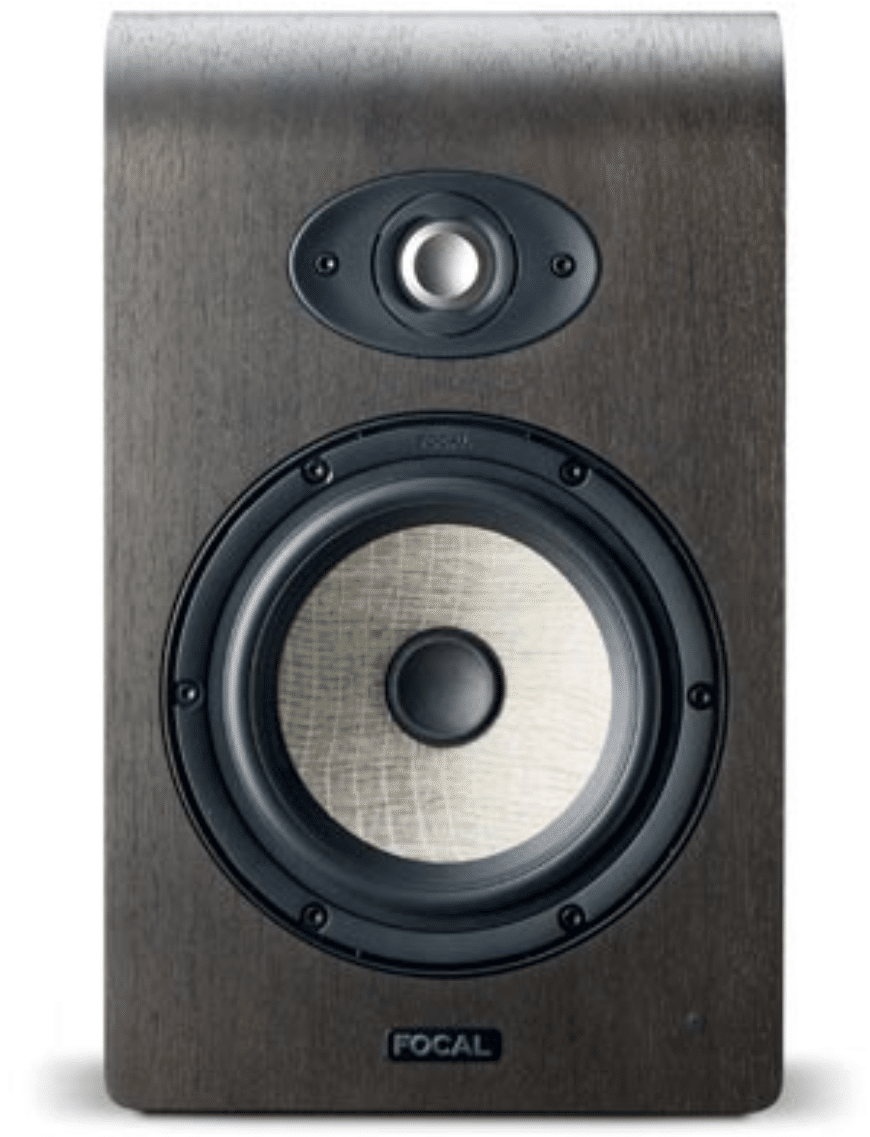
The Focal Shape 65 is a testament to Focal’s mastery in studio monitor design, offering unparalleled sound quality in its class.
These monitors are particularly favored by producers, audio engineers, and mastering engineers who seek clarity and “flatness” through the mid and high frequencies (not low frequencies).
This is essential for genres where vocal and instrumental details are paramount.
The Shape 65 features a 6.5” woofer and a 1” tweeter, with a frequency range of 40Hz-35kHz.
The innovative design includes a passive radiator on the side of the monitor 一 reducing low-frequency buildup common in small mix rooms.
The Shape 65’s fine-tuned frequency response and controlled low-end make it an excellent choice for home studios.
The monitors are known for their clarity and flat mid-high response, making them ideal for mixing and mastering tasks where accuracy is key.
Key Features of These Studio Monitors:
- 6.5” woofer and 1” tweeter for a wide frequency response.
- Frequency range of 40Hz-35kHz for precise sound reproduction.
- Passive radiator reduces low-frequency buildup.
- Clarity and flat mid-high response ideal for accurate mixing.
- One of the best studio monitors for 2024.
#12. HEDD Audio Type 20
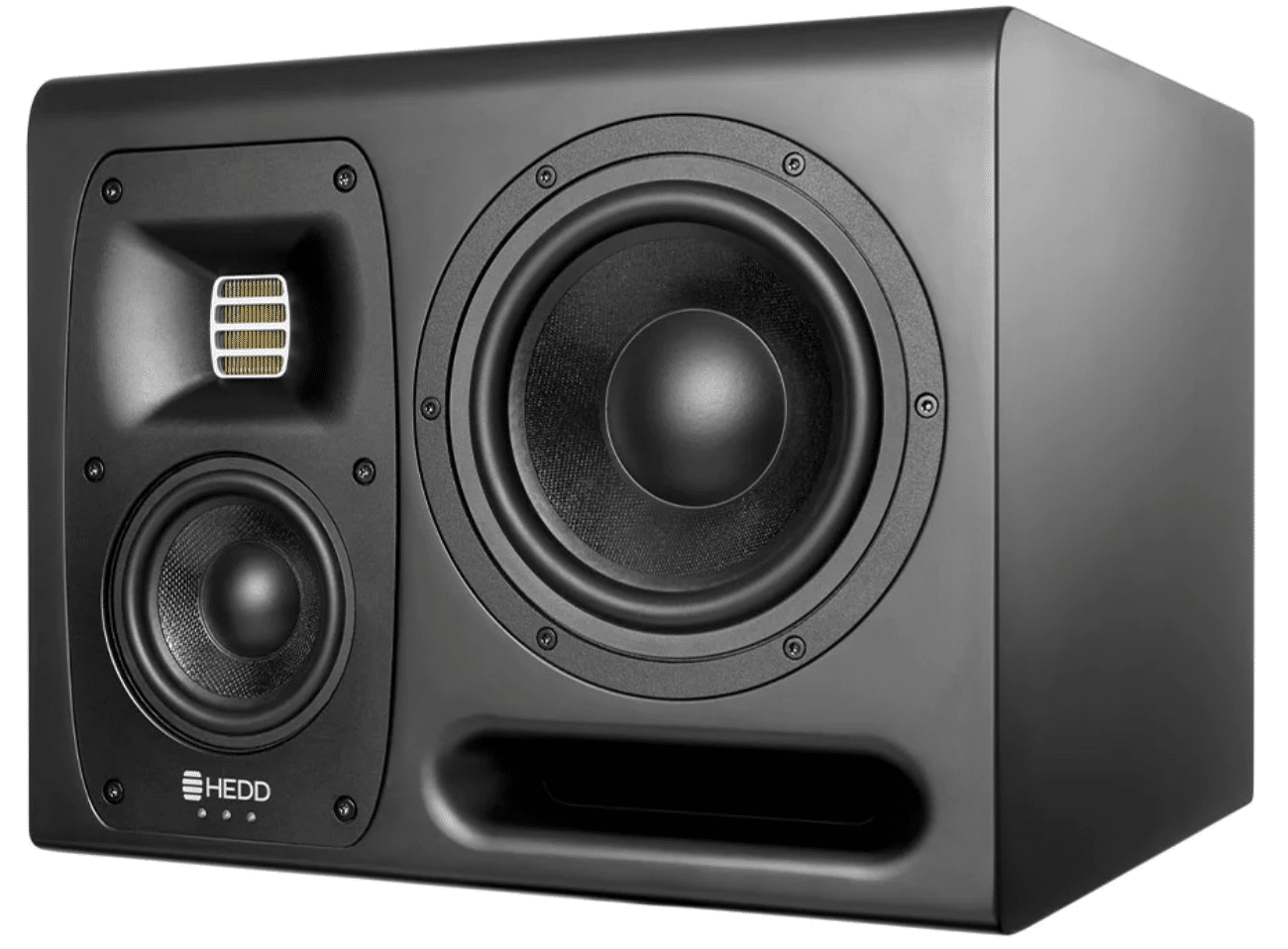
HEDD Audio Type 20 studio monitors represent the cutting-edge of audio technology, offering unparalleled precision and sound quality.
These monitors are particularly suitable for well-treated rooms, where their detailed sound reproduction can be fully appreciated.
The Type 20 is a three-way monitor, featuring a 7” woofer, a 4” midrange driver, and a high-frequency tweeter, covering a broad frequency range of 32Hz-50kHz.
This setup ensures a small sweet spot for detailed and accurate sound reproduction.
The Linearizer plugin accompanying these monitors helps calibrate both frequency and time response 一 optimizing them for specific mix rooms.
Their sophisticated design and high-end components make the HEDD Audio Type 20 ideal for professional studios and audiophiles.
Key Features of These Studio Monitors:
- 7” woofer, 4” midrange driver, and high-frequency tweeter for broad frequency coverage.
- Frequency range of 32Hz-50kHz ensures detailed sound reproduction.
- Small sweet spot ideal for accurate monitoring.
- Linearizer plugin for calibration in specific mix rooms.
- High-end components suitable for professional studios.
- One of the best studio monitors for 2024.
#13. Neumann KH 120
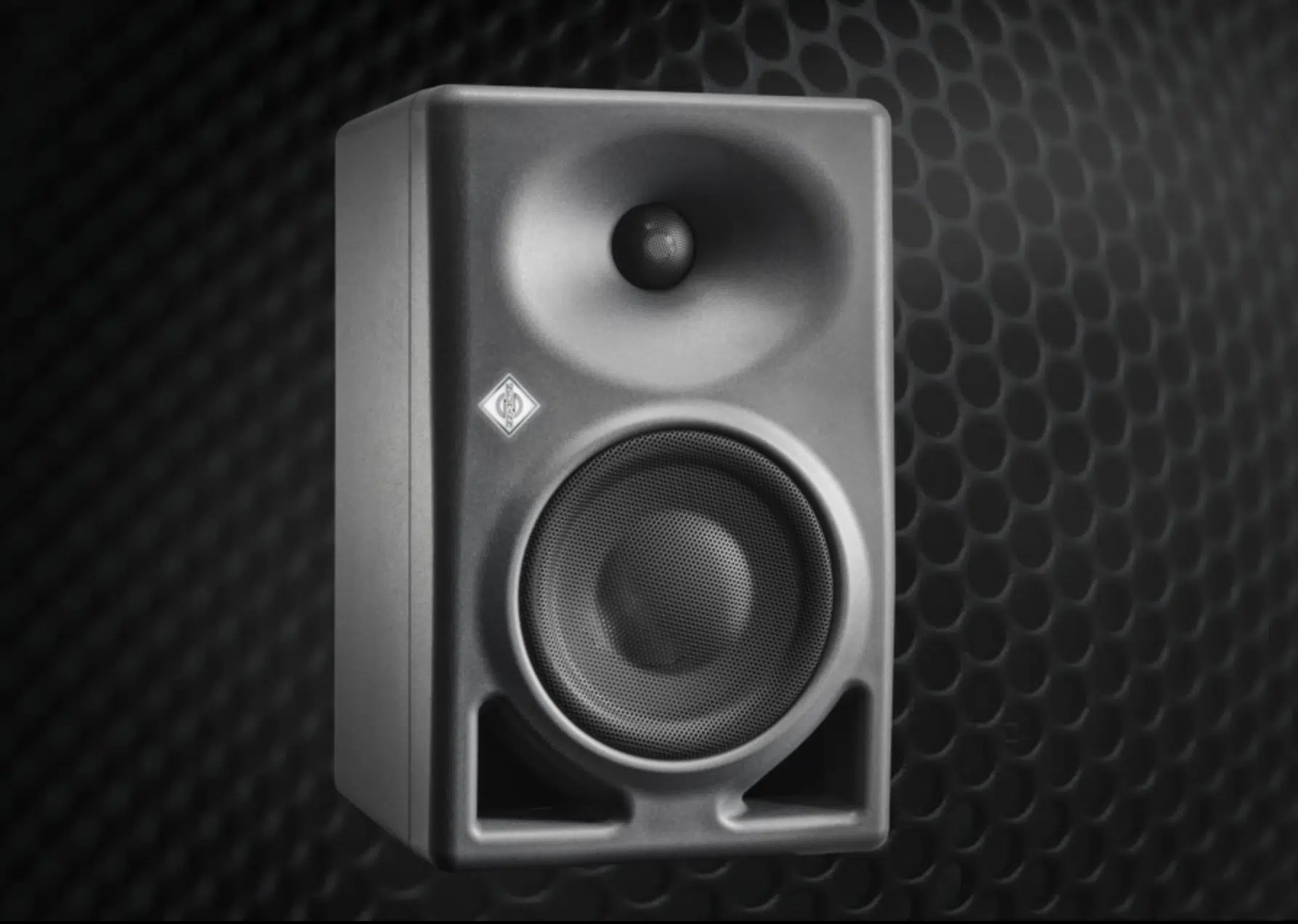
The Neumann KH 120 studio monitors are a pinnacle of acoustic engineering, designed to meet the highest standards of audio professionals.
Esteemed for their precision and versatility, these monitors are a staple in music, broadcast, and post-production studios.
It appeals to those who require absolute sonic accuracy in their work.
Sporting a Mathematically Modeled Dispersion waveguide, the KH 120 offers exceptional sound dispersion and clarity.
This makes them ideal for both nearfield and rear loudspeaker applications in multi-channel systems.
The monitors feature a 5.25″ woofer and a 1″ tweeter 一 delivering a frequency range that ensures accurate reproduction of sound across the frequency spectrum.
Their analog class-AB amplifiers provide ample power, maintaining low distortion and high dynamic range, essential for detailed audio work.
Key Features of These Studio Monitors:
- 5.25″ woofer and 1″ tweeter for accurate sound reproduction.
- Wide frequency range ensuring detailed audio across the spectrum.
- Mathematically Modeled Dispersion waveguide for superior sound dispersion.
- Analog class-AB amplifiers for low distortion and high dynamic range.
- Ideal for music, broadcast, and post-production studios.
- One of the best studio monitors for 2024; better than most monitors.
#14. Yamaha HS8
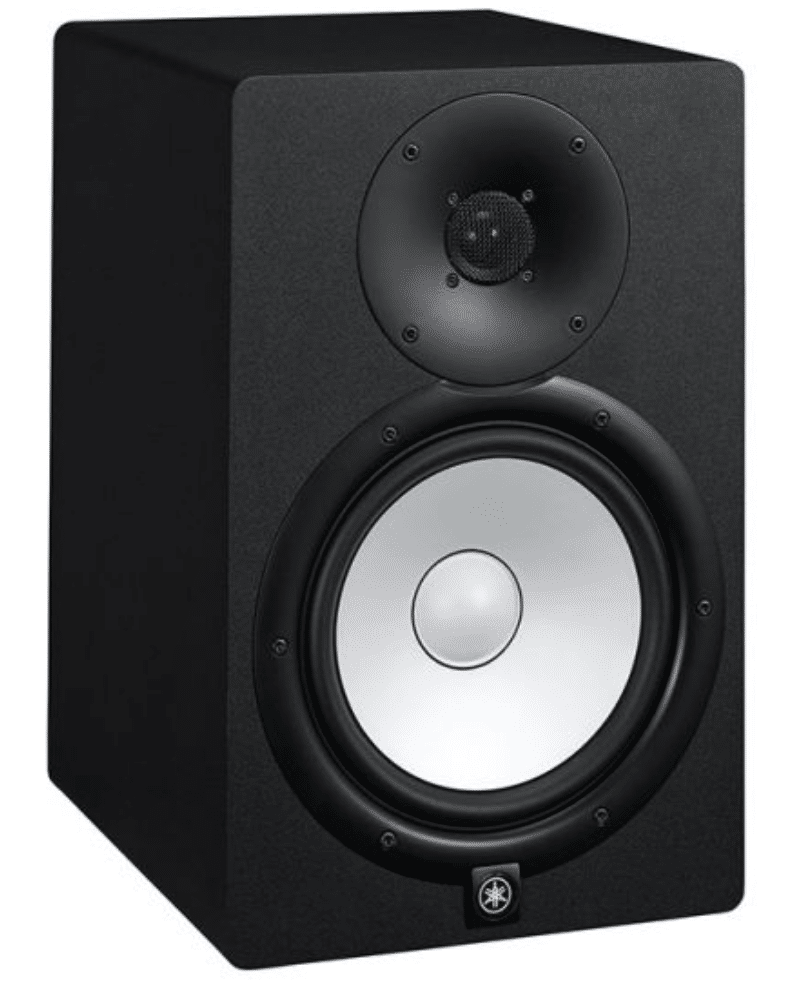
The Yamaha HS8 studio monitors are a revered choice among music producers for their exceptional accuracy and detailed sound reproduction.
These monitors, with their iconic white two woofers design, are an industry standard, offering a level of precision that is essential for professional mixing and mastering.
The HS8 features an 8” cone woofer and a 1” dome tweeter, providing a wide frequency range of 38Hz-30kHz.
This range ensures a transparent sound across the frequency spectrum, crucial for critical listening and accurate mixing.
The ROOM CONTROL and HIGH TRIM response controls allow for customization to suit room acoustics 一 making them versatile for various studio environments.
Key Features of These Studio Monitors:
- 8” cone woofer and 1” dome tweeter for expansive sound.
- Frequency range of 38Hz-30kHz for transparent sound across the spectrum.
- ROOM CONTROL and HIGH TRIM for customization.
- Ideal for professional mixing and mastering.
- One of the best studio monitors for 2024.
#15. Focal Solo6 Be
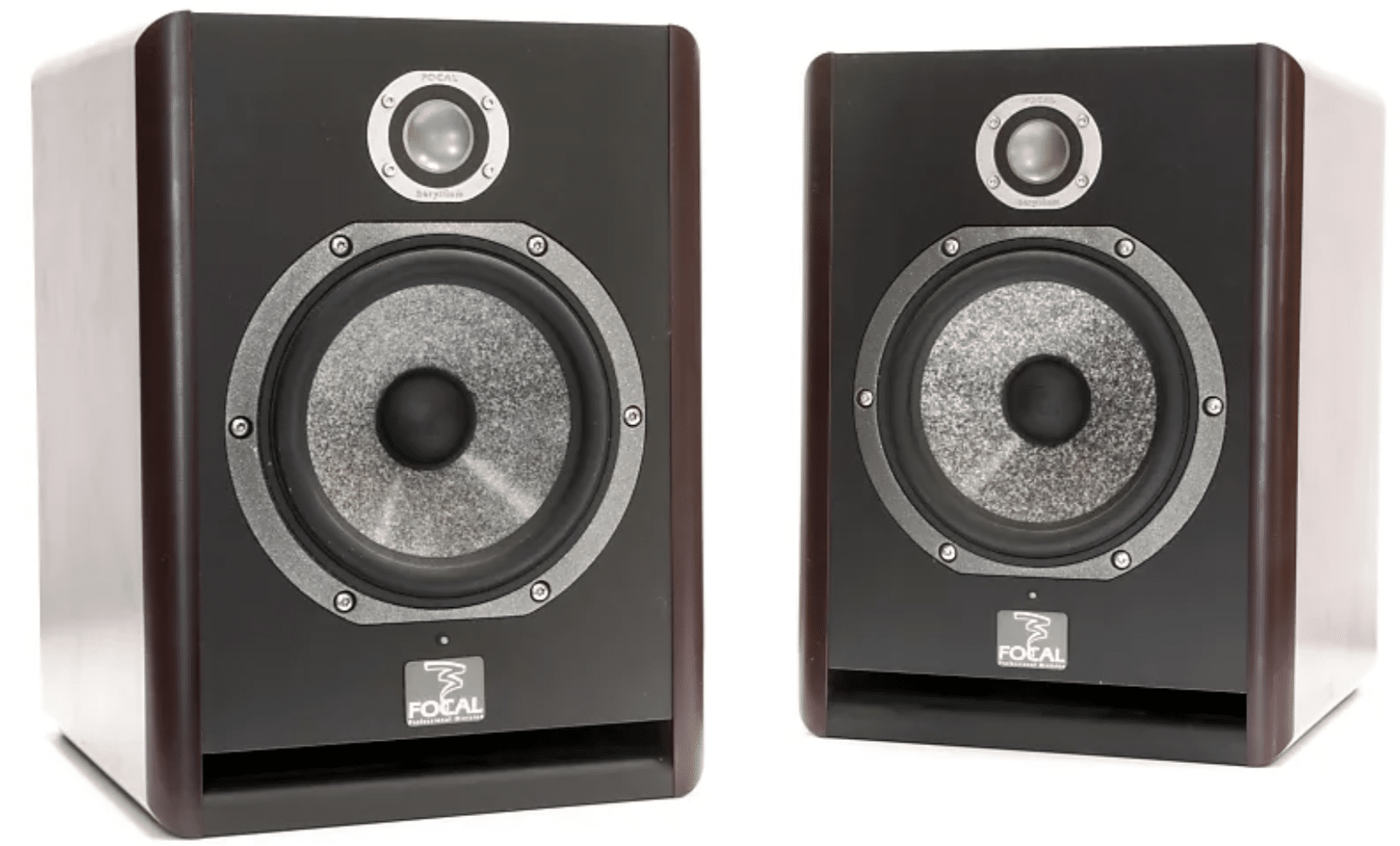
The Focal Solo6 Be studio monitors stand at the forefront of audio excellence, offering unparalleled sound quality for the discerning music producer.
Known for their neutral response and impressive low-end, these monitors are perfect for a wide range of musical genres.
Featuring a 6.5” woofer and a 1” Beryllium inverted dome tweeter, the Solo6 Be offers a frequency range that ensures a detailed and balanced sound profile.
The design emphasizes a transparent sound across high frequencies.
This makes them ideal for working with intricate sonic details, especially in vocal and instrumental tracks.
Key Features of These Studio Monitors:
- 6.5” woofer and 1” Beryllium inverted dome tweeter for detailed sound.
- Wide frequency range for a balanced sound profile.
- Transparent sound across high frequencies.
- Suitable for a variety of musical genres.
- One of the best studio monitors for 2024.
Best Studio Monitors: Final Thoughts
As we’ve explored the diverse range of studio monitors available for 2024, it’s clear that the right choice can significantly enhance your music production experience.
Whether you opt for active, passive, ported, or nearfield monitors, each type offers unique benefits to cater to your specific needs as a music producer.
Remember, the key is to find a monitor that not only fits your studio space but also complements your production style.
To further elevate your music production, don’t miss out on the Free New Wave Sample Pack.
This comprehensive pack includes over 60 free New Wave samples, loops, and MIDIs 一 designed to bring a new level of professionalism and creativity to your beats.
Whether you’re crafting intricate new wave tracks or exploring other genres, these high-quality samples can add color, character, and interest to your music.
Integrating these samples with the nuanced sound reproduction of your chosen studio monitors will allow you to experience and shape your music with greater depth and clarity.
Combining the precision of the best studio monitors with the vibrant and dynamic sounds from this free New Wave Sample Pack will take your music production to new heights.
Make your beats stand out, sound professional, and be placement-ready. Embrace these tools and let your musical creativity flow unbounded.
Until next time…







Leave a Reply
You must belogged in to post a comment.